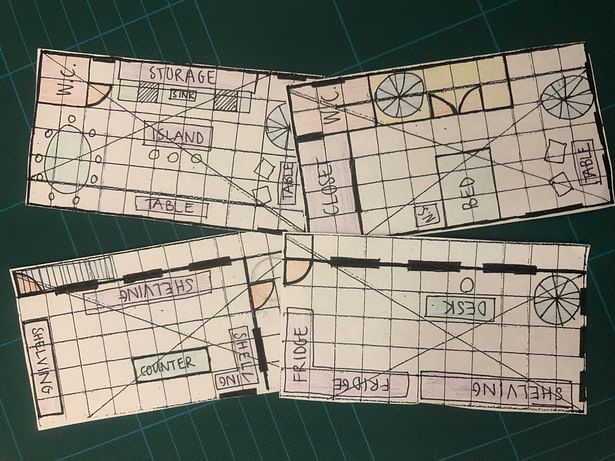

To complete the series of Architecture courses at the Daniel Center in Genoa, Italy, my peers and I were tasked with creating and planning our own piazza, or public square. We were able to experience a wide variety of piazzas, especially as we took to the city to explore its architecture each morning as part of the Architectural Field Studies Course. This experience gave valuable insight into the day-to-day functions and uses of architecture. My peers and myself were able to work both collaboratively and individually, as we each had the chance to design our own building but learned to work together to create an "ideal" piazza.
The first stages of planning were collaborative and focused mainly on brainstorming. We created a piazza that held a wide variety of shops, professional/office buildings, and entertainment. We considered the advantages and disadvantages that came with the inclusion of many different types of businesses, and were careful to consider the relationship that each business would have with another. This led to balance between building uses. Though we were not limited to actual zoning regulations, we did consider how each business might affect another.
I chose to design and build a flower and fruit stand. I was inspired by the many local flower shops in Genoa, and the color and beauty that they brought to the urban area. Similar to typical Genoese building designs, my structure would consist of the store on the first floor, office space and storage on the second floor, and a residential area on the third and fourth floors. I began my design process by creating floor plans, and these changed many times as I considered the different uses of each floor and location of things such as the staircase, a balcony, bathrooms, windows, and doors.
The next step in my design process was creating exterior elevations based on floor plan elements. This process was more efficient than creating the floor plans in the sense that the design was finalized, but it was more difficult in the fact that it was more technical and mathematically inclined.
Once elevations had been finalized, I moved to transform my 2D drawings into a 3D model. I utilized SketchUp, and found that my experience using AutoCAD was extremely relevant and useful. With careful attention to dimensions, sturdiness, and structural integrity, I began a very detail-oriented approach to 3D modeling. My engineering background led me to take a more technical perspective of this portion of the design process. Through a trial-and-error process, I was able to create a 3D model with paper, a laser-cutter, and glue. Once the 3D model was complete, I decorated the facade with a piece of a postcard I bought in Genoa. I thought that this piece tied together my design intent and the cultural surroundings that inspired me initially.
My peers and I were able to display our final designs in a Genoese piazza. At each station we displayed different elements of our design process.
This project not only made my appreciate for architecture and design grow, but it gave me a unique understanding of the relationship between design and structural integrity, which as an engineer was a strong focus of mine. I thoroughly enjoyed being able to develop my idea from the brainstorming stage to a physical model as it showed me the complex relationship between each step of the design process.
Status: School Project
Location: Genoa, Italy
My Role: Owner/Designer of Flower & Fruit Stand
Additional Credits: Clemson University Architecture Minor Program Summer 2018 students, Dan Harding